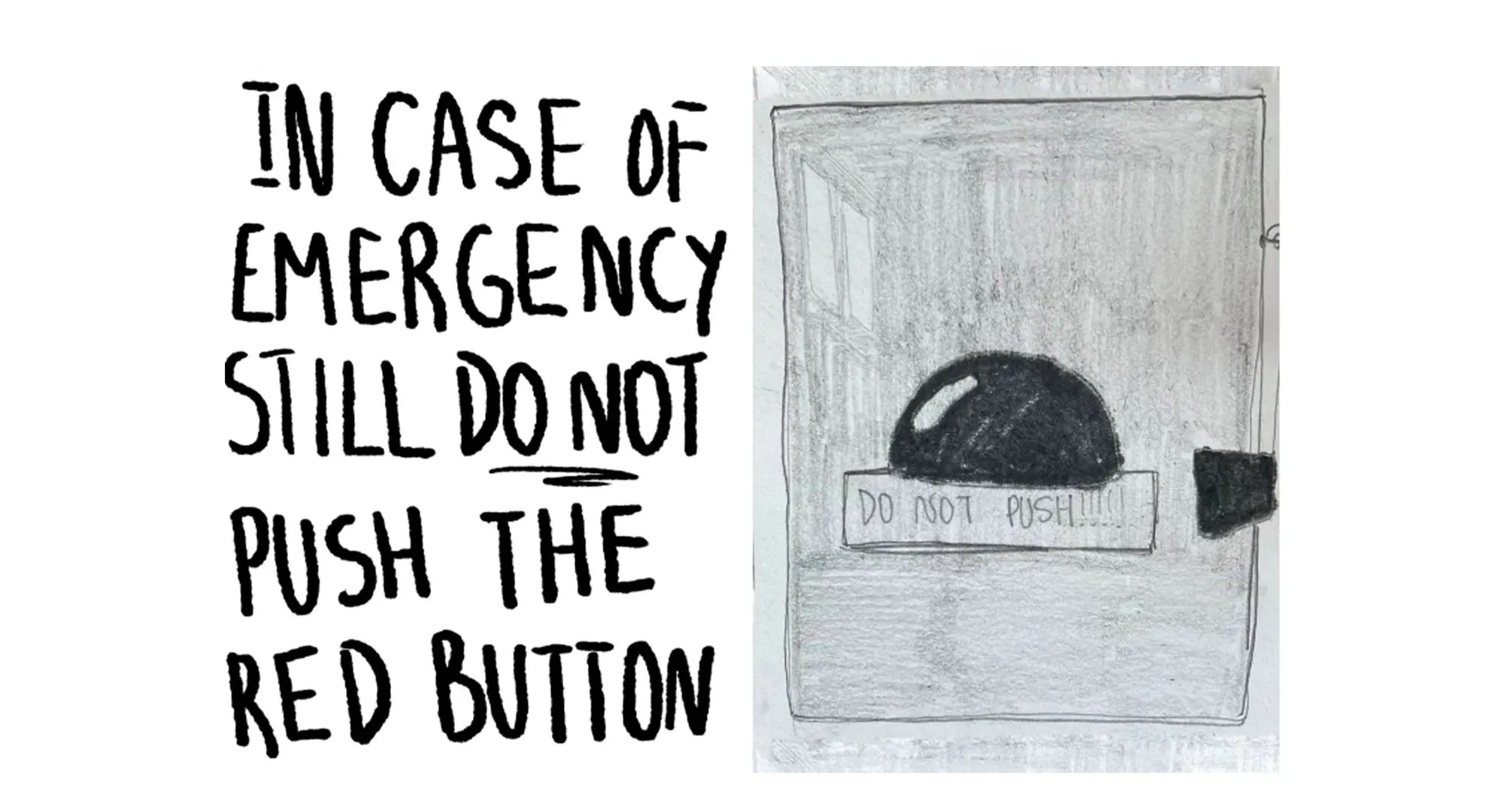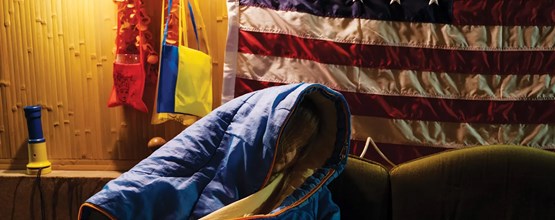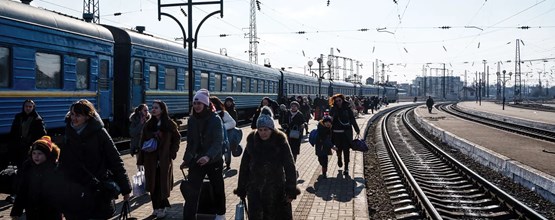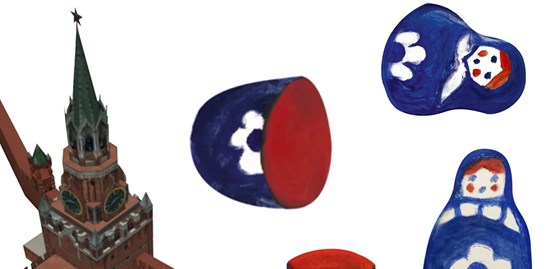
A long period of peace | Dialogue with Claire P. Kaiser
05.10.2022 | 8 Min to readDr. Claire P. Kaiser is an adjunct professor at the Center for Eurasian, Russian, and East European Studies at Georgetown University. Since 2012, she has been interested in researching the history of Georgia during the Stalinist and post-Stalinist period. Her academic work attempts to reconstruct the history of forced migration, ethnic cleansing, and the top-down practices of national homogenization in Georgia based on archival materials, oral history sources, and other secondary material.[1]
Tamar: How did the history of the post-Second World War period, as well as the politics of de-Stalinization, become the main scope of your research?
Claire: For my book and my broader research, the more important question was what happens when Stalin leaves the scene? What does de-Stalinization mean for a Georgian national project that was very much in development at the time of Stalin’s death? What happens when Khrushchev decides to, quite suddenly, dismantle the cult of Stalin and then enforce that decision violently against Tbilisi demonstrators in 1956? What does that mean for everything that comes up after? So, that was my sort of big picture entry point into my research.
I think, in the title of my forthcoming book, Georgian and Soviet: Entitled Nationhood and the Specter of Stalin in the Caucasus, one of the most important words is the “and”—it's not Georgian or Soviet, but Georgian and Soviet. “And” is the key thrust of the book. This is because, during the past two decades or so—during the period of Saakashvili’s rule—there was a strong trend of rewriting Georgian history to make a longue durée story of Georgian history one of Russian occupation and Georgian resistance. Of course, there are elements of truth to that narrative, however, it is drastically oversimplifying the Soviet period. So, the key argument in my book is not a terribly complicated one, but one that makes the case that you should not have to be Georgian or Soviet. There were plenty of Georgians, elites, and non-elites, who found really productive ways to pursue Georgian nation-building and Georgianness through Soviet institutions, senses of belonging, and technologies of rule (to use an imperial term).
And of course, this wasn't only something that was happening in the thirties or forties, but throughout the entire period. This is another kind of key thrust of my book: The post-war and post-Stalin period was actually an extraordinarily important period in the development of Soviet Georgian nationhood. This is something, also, that continues to really influence Georgian understandings of nationhood today.
So, my book opens with a description of the Mtatsminda Pantheon, which by definition is a pantheon of the national heroes of modern Georgia. The history is that it was opened in 1929 to mark the anniversary of Griboedov’s death, as a symbol of eternal Russian-Georgian friendship. That is sort of a curious beginning to a national Pantheon. And of course, some people have entered or moved out over the years, but I think it is still in many ways a Soviet institution. Just to look at when it was built, and also to look at the very prominent Soviet Georgian intellectuals and writers who continue to be there (rightfully so). Just because they were serving the dual purpose of the Soviet state, but also the Georgian nation that was possible and encouraged.
Tamar: There are also pivotal debates whether the Soviet Union was an imperial state or not—did it impose a colonial rule over its non-Russian republics? It is also important to elaborate how the system of rule was changing under different political leaders.
Claire: I do think the Soviet Union was an empire, however, it was a very unusual empire.
Lenin clearly wanted the Soviet Union to be anything but imperial. Therefore, it was an empire that explicitly set out at the beginning to be anti-imperial. However, at the same time, the state that the Bolsheviks were constructing or creating by force had to deal with the fact that it consisted of an extremely diverse population linguistically, ethnically, and religiously, too. Lenin and Stalin sought to “solve” this problem by devoting a huge amount of resources to developing Soviet nationalities so that ultimately they could, in theory, transcend national distinctions on the journey to Communism.
In the Stalin era, this institutional support for nation-building was aimed at a smaller number of larger nationalities, e.g., those with republic-level status like Georgians and some select groups with autonomous region status. The institutionalization of nation-building started with the so-called Korenization strategy aiming to cultivate national cultures and identities, local elites and public figures, and supporting the development of national languages. This latest trend, for instance, included the process of designing high-school and university education in national languages. However, in parallel to this diligent defense of national equality and to their fight against bullying by nationalistic sentiments, they themselves conducted aggressive politics on a structural level against smaller ethnic groups—they tried to assimilate them into the bigger ethnic groups and into the cultures of titular republics.[3] But throughout, the state investments in these projects of nation-building were significant and ended up producing unintended consequences, of course, for the Soviet project at large.
And so if we see empire at a very high level as a system for managing differences, that’s something that I think Jane Burbank and Frederick Cooper and their book describe on the definition of empire: „Empires are large political units, expansionist or with a memory of power extended over space, polities that maintain distinction and hierarchy as they incorporate new people”. [4] I think it was an empire, yet that doesn’t mean that it was colonial in all cases. It looks less colonial in the case of Georgia than, for example, Central Asia. It also doesn’t mean that it was an empire in a consistent way throughout its entire 70 years, as in the case of Georgia. Empires are not static. By design they must be flexible and evolve. The Russian Empire certainly was that way. It had different relationships with different populations in terms of rank, geography, and religion, as well as across time.
Besides, it was always a question for me—okay, Stalin was running the show and there were also other extremely influential actors from Georgia and the Caucasus—a large group of them at that time and not just in Moscow, but also controlling regional organs and different ministries. So, does that mean that Georgians got a pass or had an “easier” experience during the Stalin era? Clearly that wasn’t the case—Georgia and Georgians experienced significant state-directed violence, repression, and terror in the early Soviet period—but people unfamiliar with the Georgian case sometimes (incorrectly) assume otherwise.
Clearly, Stalin’s figure generates huge controversies among Georgians. There is a real tension between, on the one hand, having the co-ethnics from a country that sees itself in world-historical terms as the world’s “first workers’ state” seeking to export revolution globally, transcend national distinctions, and eventually will go on to defeat fascism—these are big, big ambitions. But on the other hand, you have a group in Moscow who has an intimate understanding of the diverse and complex landscape of the Caucuses, not just of Georgia, but of the very intricate and sometimes counterintuitive map that comes into being in the twenties with the various autonomous regions, the various compromises that led to the territorial lines that were drawn in the twenties and thirties.
Tamar: But then Stalin leaves the scene. How does this affect the relationship between center and periphery in terms of Georgia? […]
Claire: Another point in my book is that nation-building under the Soviet umbrella was not just about the Stalin period. This is something that the 1956 events really show and Tim Blauvelt writes about[6]—the perception of a loss of status I think was real—as terrible and tragic as the terror was, as ruthless as Beria’s rule was in Georgia. Despite all that, there was still a sense of pride that Georgians were at or near the top of the Soviet national hierarchy in terms of power and influence. And so, when that very suddenly stopped with Stalin’s death and Beria’s execution, the fear was about what that lack of status and privilege might mean and clearly this was a big concern for many people. What resulted from it was the March 1956 demonstrations across Georgia and the military’s decision to use violence against peaceful protestors in Tbilisi mere days after Khrushchev had proclaimed that he was not going to restore the violence that Stalin’s period was known for. And this scale of demonstration against a central policy change was something that Moscow certainly didn’t want to happen again. So, it was sort of a compromise negotiated between Soviet leaders and the Georgian SSR leader Vasil Mzhavanadze, that he would keep a lid on national demonstrations of this scale, while also granting a certain kind of freedom to, more or less, do what they wanted to do as long as that first condition was maintained. Of course, this is an oversimplification, but it was a much more hands-off relationship than what had preceded it.
From 1957 onward, until Shevardnadze comes onto the scene in 1972, and even during Shevardnadze’s tenure leading the republic, there opened up new opportunities. This allowed for the kind of development of Georgian official nationalism, nation-building and other practices through Soviet institutions that made Georgia and Georgians much stronger and bolder, than, maybe, what we see in other republics at that time. It was allowed to develop and cultivate from above; it allowed for a black market and corruption and in the sixties and seventies Georgia was the leader Union-wide in black markets. Shevardnadze tried hard in the seventies to rein in corruption and the black market, but ultimately couldn’t do much. But, I think, it contributes to the bigger-picture-question of the idea that the seventies and eighties—to some extent—were, for the twentieth-century at least, a period of relative prosperity, high standards of living in at least the urban areas, political and security stability, high levels of education and professional advancement, and in general a republic that looked much more “Georgian” on paper and in practice that any time before it.
Some people now are looking back fondly on the Soviet period because they’re comparing it to the nineties, which were so difficult in Georgia due to the war, economy, and instability—politically, economically, and socially. And so, you can’t understand some of those discussions about Soviet memory and nostalgia without understanding how and why some in society might be looking back positively on the Soviet era. The relative prosperity and freedom of the 1960s-1970s-early 1980s is a big part of this.
Tamar: How does the Georgian case fit to the larger picture of Soviet history when it comes to the historical conceptualization of 70s and 80s as the Era of Stagnation, the period of “Zastoi”?
Claire: I cover this issue in the last two chapters of my book. And I think Georgia absolutely refutes the “Zastoi” characterization of the Brezhnev era. I don’t think Georgia is the only national republic where that was the case, but it is the one that I know best and likely the one readers are most interested in. You see this in two ways. The first is the thriving black market on the one hand—and that required some entrepreneurial spirit and some creativity, and it was nothing if not dynamic. It covered different strata of society and different parts of the republic.
The other way in which you really see a lot of dynamism is in moments of national mobilization. For example, I have a chapter on the protests related to the 1978 constitution and I look at this with two frames. The first is the language question and the effort by Moscow to take out the very short sentence from the Constitution that said that Georgian language was the official language. And by doing so to make Georgia (and Armenia and Azerbaijan) consistent with all the other republic-level constitutions in the USSR. So, as the result, Tbilisi saw significant, student-led demonstrations that were highly organized and highly effective. In this constellation, Shevardnadze made a snap decision to go with the protesters and opposed the Moscow line. And that is just a really interesting moment that perfectly encapsulates the dynamism socially, but also toward national ends and with the backing of republican leadership. And it’s something that would have been hard to see in a lot of the other republics.
Secondly, I also look at the mobilization around some of the same constitutional issues related to Abkhazia that was happening in this same sort of temporal space. Of course, the Abkhaz’s demands against Georgians were not new, but they gained a new sort of tenor and new attention from Moscow in the late seventies. So, in the case of Georgians, but also non-Georgians, you see an enormous amount of dynamism, mass mobilization, political activity, and real, rights-based claims with a very national sort of lens on it totally defy the characterization of this period as stagnation. Of course, we also should not forget the extremely dynamic cultural production of this period, especially in film, where Georgia had such a prolific and profound influence.
Tamar: Juxtaposing a top-down perspective of governance with the bottom-up approach of analysis where local political actors had huge power over shaping the post-war national politics of the republic.
Claire: Yeah, absolutely. I certainly see this in my chapter on deportations, I see this in case of Abkhazia in the Stalin era and in the postwar era—a desire to go above and beyond what is asked from both the Moscow and Tbilisi “centers”. The deportation of Greeks from Abkhazia is a really good example of this, where there was a very discrete number of ethnic Greeks who were supposed to have been deported to Central Asia in June 1949. The local actors decided to over-perform and deported several other Greek families too. They called them volunteers who, needless to say, actually did not volunteer to be deported. (The problem of overperformance from local officials was something that Mzhavanadze inherited in the mid-1950s when via petition campaigns deported people tried not only to get the right to return, but also to collect lost properties, drawing senior-most level attention from Moscow). The center-periphery dichotomy gets very blurry in the Stalin era, but also in the early post-Stalin period. And the arrows weren’t always unidirectional, they could go both ways too, in terms of the power dynamics.
Tamar: How and in what way did the undercurrents that formed in the 70s and 80s affect the post-Soviet transition and the neo-nationalist uprising, which could be traced to nowadays when looking at right wing politics, religious institutions, and discourses about Georgians and nationalism?
Claire: There’s a lot to unpack here, but to keep it simple, first one of the reasons why I think the post-war period is so important is because in this period Georgia becomes actually much more Georgian in terms of its demographics, according to the Soviet census at least. It is when Tbilisi moves from being what had historically been an extremely multi-ethnic city to one that is majority Georgian. I explore this process in my book with a case study of Tbilisi’s Saburtalo neighborhood. But more broadly, it’s the period when the foundations of Soviet nationality policy that were laid in the 1920s-1930s actually came to fruition among second- and third-generation Soviet Georgians.
Second, some of those foundations of nation-building were more in the cultural realm, like things that tend to have maybe more positive connotations—writing history textbooks, promoting a national canon, promoting literacy in local languages, etc. Of course, there’s a darker side to national homogenization projects and these are things like ethnic cleansing, border cleansing operations, and combining dialects or sub-languages into the bigger language. We see this with Svans, Lazis, and Megrelians being incorporated, according to the census, into a single “Georgian” category from 1939 and onward.
For my book, I've read a lot of letters and petitions from archives in Georgia to get voices that aren’t just from senior officials, but to better understand the real concerns that people, at least, from across all age groups across the republic were willing to express to official organs about what their complaints and fears were and how they were understanding things like nationality policies and national rights, local cleansing operations, access to language education, concerns about co-ethnics in other republics or in autonomous regions, or how they were viewing their neighbor who maybe wasn’t of the same ethnicity and those sorts of things. These weren’t just high-level issues, they had a daily resonance too. So, I think it was the post-war period when the work of nationalizing Georgia demographically, culturally, and socially was carried out. It was a time of peace, unlike the tumult of the back-to-back World War I/revolution/collectivization/Terror/World War II period. The economy was (more) stable.
It should be clarified that this broader process—or goal—of national homogenization was not limited to Georgia. The international system that World War II ended up producing is one of nation-states. The United Nations is made up of nation-states. And so the expectation that the state or the republic should be homogenous in favor of what I call the “entitled nationality” rather than the titular nationality was a very twentieth-century—and especially post-WWII—ambition. You see in that period increasingly emboldened republic leaders making that a reality and also a population that was increasingly embracing the privileges that the architecture of Soviet nationality gave them—“we are Georgians and we are in Georgia” or “Our constitution grants us the right to have this official language”. And those Marxist-Leninist nationality frameworks and theories, which people like to assume didn’t have meaning for people, apparently did have meaning for some, because they were trying to make claim on the types of rights that were afforded to them through Soviet institutions, rather than in spite of them.
[1] Claire P. Kaiser, “Lived Nationality: Policy and Practice in Soviet Georgia, 1945-1978”, Dissertation, University of Pennsylvania, 2015; Claire P. Kaiser, ‘6, “A Kind of Silent Protest? Deciphering Georgia’s 1956”, in Georgia after Stalin - Nationalism and Soviet power, ed. Timothy K. Blauvelt and Jeremy Smith, (Routledge, 2018); Claire P. Kaiser, ‘5. “What Are They Doing? After All, We’re Not Germans”: Expulsion, Belonging, and Postwar Experience in the Caucasus”, in Empire and Belonging in the Eurasian Borderlands, ed. Krista A. Goff and Lewis H. Siegelbaum (Cornell University Press, 2019), 80–94.
[2] Ronald Grigor Suny, The Making of the Georgian Nation (Indiana University Press, 1994).
[3] For further reading see: Krista A. Goff, Nested Nationalism: Making and Unmaking Nations in the Soviet Caucasus (Cornell University Press, 2021).
[4] Jane Burbank and Frederick Cooper, Empires in World History: Power and the Politics of Difference, Illustrated edition (Princeton, N.J: Princeton University Press, 2011).
[5] Giorgi Maisuradze and Franziska Thun-Hohenstein, Sonniges Georgien: Figuren des Nationalen im Sowjetimperium (Berlin: Kulturverlag Kadmos, 2015).
[6] Timothy K. Blauvelt, “Resistance, Discourse and Nationalism in the March 1956 Events in Georgia”, in Georgia after Stalin – Nationalism and Soviet Power (Routledge, 2015), 132-44.
We Recommend

A Trap | Davit Apakidze
01.09.2022




